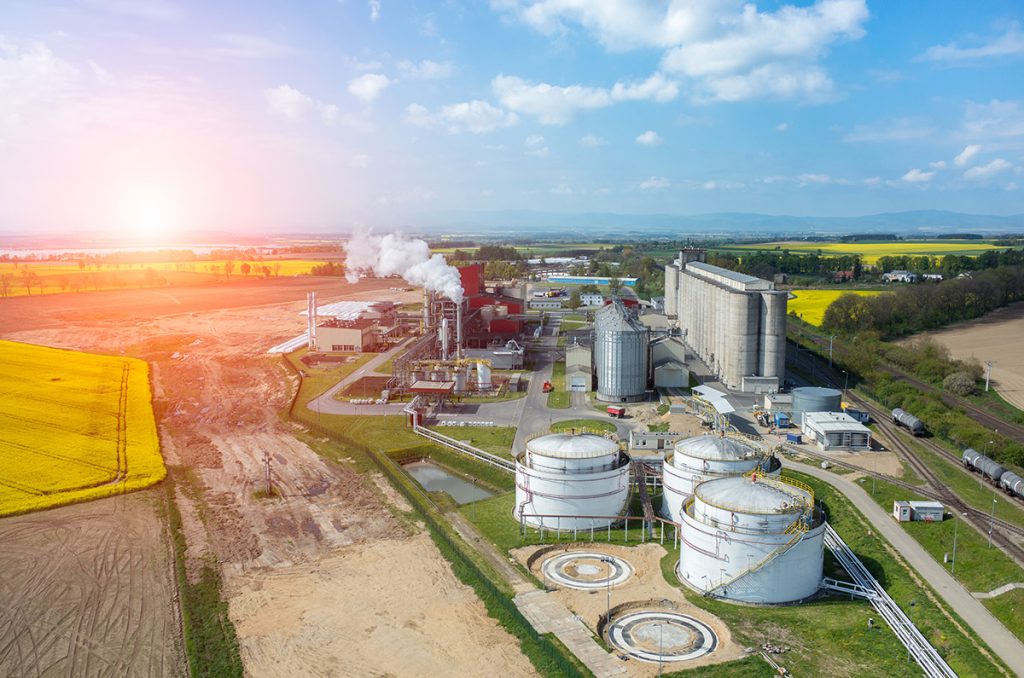With the onset of climate change, scientists have been working diligently for decades to develop alternative sources of energy to replace fossil fuels. Solar power, wind energy, and nuclear power are well-known and established options, but one alternative stands above the rest as potentially the most abundant and sustainable: bioenergy.
Bioenergy is produced using biomass, a renewable and biodegradable energy resource derived from plant- and algae-based materials such as perennial grasses, crop waste, food waste, forest residues, microalgae, and more.
While wood and wood residue are currently the largest biomass resources (or “feedstock”), perennial grasses, agricultural waste, manufacturing waste, and municipal waste can also be used. Since greenhouse gas emissions can be reduced significantly by using bioenergy, utilizing this type of energy is a win-win for both the environment and the economy.
Biofuel
Biofuels derived from perennial grasses not only replace fossil fuels, they also provide an opportunity to sequester significant amounts of carbon in the soil also known as Soil Organic Carbon (SOC) where the perennial grasses are grown. SOC has been identified as a major strategy to reduced greenhouse gas and CO2 emissions.
Fermented sugars derived from crops like sugarcane and corn can also be used to make bioethanol, an alcohol that can be added to gasoline to cut carbon emissions or used to produce electricity in fuel cells.
These biofuels can be used in airplanes and most vehicles on the road today. Since biofuels are carbon-neutral, the overall carbon intensity of vehicle usage is lower than when using traditional fossil fuels. This reduces the amount of harmful CO2 in our atmosphere.
Biopower
Biomass can also be used as a renewable heat and electricity source, reducing the need for traditional carbon fuel usage in the electricity industry. Like biofuels, the carbon emission rate of electricity generation is also lowered by using biopower.
To generate electricity, biomass sources like perennial grasses can be burned to create highly pressurized steam that then rotates turbine blades to power a generator. By converting biomass into gas or liquid biofuel, bioenergy can also be used to power furnaces, turbines, and engines.
Bioproducts
Additionally, biofuels can be used to create bioproducts like biochar, plastics, chemicals, lubricants, fertilizers, and other products traditionally produced using petroleum or natural gas. Bioproducts can be produced using less energy than petroleum and generate fewer greenhouse gases than traditional methods.
By establishing integrated biorefineries to produce these products alongside biofuels and biopower, the manufacturing process can lead to a healthy, viable bioeconomy.
Additional Uses and Benefits
Because bioenergy is both the largest and most sustainable energy source in the world, researchers are actively developing new, innovative ways to utilize this energy.
By encouraging the production of biomass and incorporating biofuels on a wide scale, the US can also benefit from the usage of bioenergy through job generation and a reduction in the dependence on foreign oil. It has been predicted that the US could produce 1 billion tons of biomass by 2040, creating 1.1 million new jobs, generating 85 billion kilowatt-hours of electricity, and manufacturing up to 50 billion gallons of biofuels.
Undeniably, bioenergy is an excellent alternative to harmful fossil fuels across many different industries. To best develop and harness this energy, the Farm Service Agency is even introducing programs like the Biomass Crop Assistance Program, which pays farmers to create, produce, and deliver biomass feedstocks.
FDCE’s Bioenergy Sector
As the use of bioenergy continues to advance and expand across the country, farmers will likely play a major part in biomass production, creating a safer, better environment for all.
At FDCE, we regularly work with perennial grasses to create biochar, wood vinegar, and bioenergy, in direct combustion. Learn more about the bioenergy projects we’re currently working on or request a free quote to start working with us on your upcoming bioenergy venture today.

